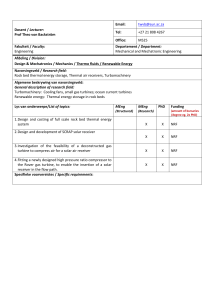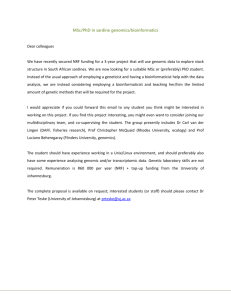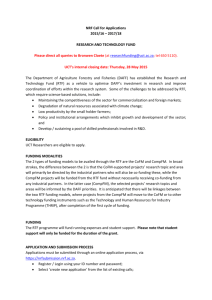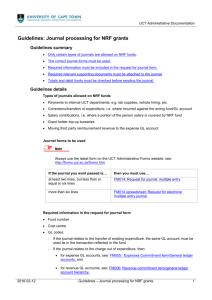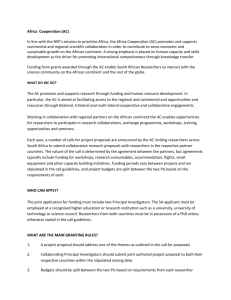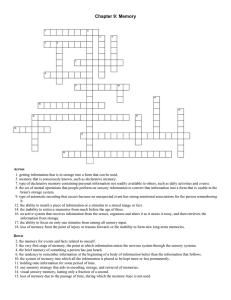The Neurorelational Framework (NRF) Notes
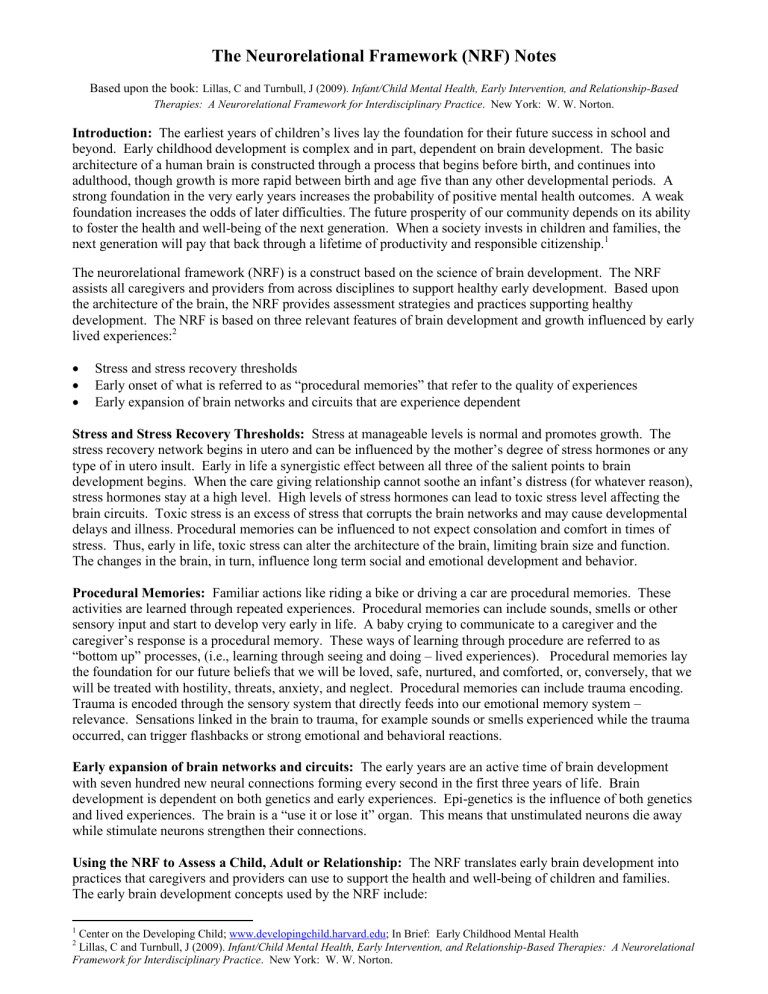
The Neurorelational Framework (NRF) Notes
Based upon the book: Lillas, C and Turnbull, J (2009). Infant/Child Mental Health, Early Intervention, and Relationship-Based
Therapies: A Neurorelational Framework for Interdisciplinary Practice . New York: W. W. Norton.
Introduction: The earliest years of children’s lives lay the foundation for their future success in school and beyond. Early childhood development is complex and in part, dependent on brain development. The basic architecture of a human brain is constructed through a process that begins before birth, and continues into adulthood, though growth is more rapid between birth and age five than any other developmental periods. A strong foundation in the very early years increases the probability of positive mental health outcomes. A weak foundation increases the odds of later difficulties. The future prosperity of our community depends on its ability to foster the health and well-being of the next generation. When a society invests in children and families, the next generation will pay that back through a lifetime of productivity and responsible citizenship.
1
The neurorelational framework (NRF) is a construct based on the science of brain development. The NRF assists all caregivers and providers from across disciplines to support healthy early development. Based upon the architecture of the brain, the NRF provides assessment strategies and practices supporting healthy development. The NRF is based on three relevant features of brain development and growth influenced by early lived experiences:
2
Stress and stress recovery thresholds
Early onset of what is referred to as “procedural memories” that refer to the quality of experiences
Early expansion of brain networks and circuits that are experience dependent
Stress and Stress Recovery Thresholds: Stress at manageable levels is normal and promotes growth. The stress recovery network begins in utero and can be influenced by the mother’s degree of stress hormones or any type of in utero insult. Early in life a synergistic effect between all three of the salient points to brain development begins. When the care giving relationship cannot soothe an infant’s distress (for whatever reason), stress hormones stay at a high level. High levels of stress hormones can lead to toxic stress level affecting the brain circuits. Toxic stress is an excess of stress that corrupts the brain networks and may cause developmental delays and illness. Procedural memories can be influenced to not expect consolation and comfort in times of stress. Thus, early in life, toxic stress can alter the architecture of the brain, limiting brain size and function.
The changes in the brain, in turn, influence long term social and emotional development and behavior.
Procedural Memories: Familiar actions like riding a bike or driving a car are procedural memories. These activities are learned through repeated experiences. Procedural memories can include sounds, smells or other sensory input and start to develop very early in life. A baby crying to communicate to a caregiver and the caregiver’s response is a procedural memory. These ways of learning through procedure are referred to as
“bottom up” processes, (i.e., learning through seeing and doing – lived experiences). Procedural memories lay the foundation for our future beliefs that we will be loved, safe, nurtured, and comforted, or, conversely, that we will be treated with hostility, threats, anxiety, and neglect. Procedural memories can include trauma encoding.
Trauma is encoded through the sensory system that directly feeds into our emotional memory system – relevance. Sensations linked in the brain to trauma, for example sounds or smells experienced while the trauma occurred, can trigger flashbacks or strong emotional and behavioral reactions.
Early expansion of brain networks and circuits: The early years are an active time of brain development with seven hundred new neural connections forming every second in the first three years of life. Brain development is dependent on both genetics and early experiences. Epi-genetics is the influence of both genetics and lived experiences. The brain is a “use it or lose it” organ. This means that unstimulated neurons die away while stimulate neurons strengthen their connections.
Using the NRF to Assess a Child, Adult or Relationship: The NRF translates early brain development into practices that caregivers and providers can use to support the health and well-being of children and families.
The early brain development concepts used by the NRF include:
1
Center on the Developing Child; www.developingchild.harvard.edu
; In Brief: Early Childhood Mental Health
2
Lillas, C and Turnbull, J (2009). Infant/Child Mental Health, Early Intervention, and Relationship-Based Therapies: A Neurorelational
Framework for Interdisciplinary Practice . New York: W. W. Norton.
Stress thresholds with stress and stress recovery patterns and toxic stress conditions
Types of procedural memories gained through the quality of engagement and lived experiences
Development of brain networks and circuits that are experience dependent
The NRF uses three steps to assess the parent and child that provide a clinical translation of these three important elements that we know exist from the sciences.
Step One: Assess child and parents for stress/stress recovery responses, including toxic stress conditions
(this is considered the foundation of the “house” and sets the stage for how much resiliency and vulnerability there is in each person’s nervous system)
Step Two: Assess child and parents socio-emotional milestones to understand the quality of engagement and the type of procedural memories that are getting laid down (this is considered the internal framing of the
“house” and what the developmental levels of the house are)
Step Three: Assess child and parent for individual sources of vulnerability and resilience across four brain networks/systems (regulation, sensory, relevance, executive). (this is considered the electrical wiring of the
“house” and helps one see the integrity of the brain circuits and networks) See Figure One below
Step One: To assess levels of stress – toxic or adaptive – it is necessary to know the stress recovery and normal states of being. Stress recovery is based upon two states of arousal – deep sleep and alert processing state when awake. There are four processing states when awake. (See Attachment A)
The Green Zone – Calm: present, centered; able to learn and engage with others
The remaining processing states are stress responses and considered “normal” ways our nervous system responds to stress. Each has its own continuum.
The Red Zone – Flooded: the nervous system is firing very quickly. A baby cries and adults may be highly agitated, angry upset; a child may be “tantruming.”
Blue Zone: Hypo-alert: Nervous system is firing very slowly. A person may be quiet, depressed, dissociated. These children often get over-looked because they are quiet.
Combo Zone – Hyper-vigilant: Very watchful and nervous but quiet. Child may be whiny, adult may be overly anxious or either can present in a quiet manner.
Stress responses are normal. If stress responses are a rubber band, responses stretch to accommodate the stress and then rebound to the ideal states (deep sleep and green zone). Stress becomes toxic when it occurs frequently and/or has a long duration. The rubber band is stretched out for long periods of time and loses the elasticity and does not rebound. The four toxic stress patterns include:
Stress responses that happen too frequently or too quickly
An inability to adapt to normal challenges and transitions
Prolonged stress responses that take too long to recover from
An inability to recover from a stress response
Step Two: Assessing the quality of engagement and procedural memories can occur through observing the child and the child-parent dyad achievement of developmental milestones. The social-emotional milestones are found in Axis V of the DC: 0-3R. The milestones and corresponding ages are;
3
Getting calm together (Green Zone); co-regulating-by 3 months
When calm, able to make eye contact – by 3 months
When making eye contact, able to share joy – by 5 months
3
Original functional levels from ICDL ( Interdisciplinary Council on Developmental & Learning Disorders) Greenspan, S and Wieder, S; http://www.icdl.com/dirFloortime/FEDLBasicChart.shtml
2
When sharing joy, able to create a continuous back and forth flow of communication – by 9 months
When in a flow, able to expand non-verbal communication through an increasingly nuanced ability to read emotional cues, intentions, gestures, and to solve problems – by 13 – 18 months
When sharing emotions, able to create stories via symbolic play or pretend play with developing language skills – by 24 – 36 months
When using emotional stories, able to make sense and solve problems together – by 36 – 48 months
The social-emotional milestones are developmental and it is extremely difficult to achieve the later ones without first achieving the earlier ones. Parents who did not experience high quality relationships in their early years do not have quality procedural memories. These parents may have a difficult time providing support to their child and it may be difficult for the children to reach the milestones. See Attachment B for Parent-Child Milestones
Step 3: The NRF is based on the four brain systems that work together to enable an individual to lie and interact with their environment. These systems are the:
Regulation system: includes states of arousal (24-hour, sleep-awake cycle)
Sensory system: processing and modulation of sensory information
Relevance system: full emotional range, procedural and declarative memories, self-narrative and meaningmaking
Executive system: behavior that is able to stay focused upon goals as well as having flexibility to shift focus from task to task according to the context
Psychological and behavior disorders can be understood as having underlying toxic stress conditions, with functional vulnerabilities that emerge from one or more of the brain systems. The NRF provides a way to see the child and family from a micro perspective and hold multiple variables, from multiple ports of entry, all at the same time. For example, a child with an Autistic Spectrum Disorder (ASD) may evidence a predominance of hypo-alert stress responses (Blue Zone behavior, lost in one’s private world), at the same time, being hyper- responsive (Combo Zone) to certain sensory modalities, having a constricted range of emotional expressions from the relevance system, and having poor attentional functioning from the executive system, all at the same time. Thus, the four brain systems allow one to “map” out the neurodevelopment of each child and adult. This can be viewed as the “micro” level analysis that the 4 brain systems serve a function for.
At the same time, each brain system holds “multiple” diagnostic categories that are weighted in different directions that can serve as a “macro” level analysis for diagnostic categories as well as building a community system of care. For example, the Regulation System is weighted towards Medical Conditions; the Sensory
System is weighted towards Developmental and Learning Delays; the Relevance System is weighted towards
Mental Health Disorders, and the Executive System is weighted towards Learning Disorders and Attentional
Issues. The “micro” and “macro” levels of analysis are represented in the following figure:
3
Four Brain Systems:
Macro & Micro Levels
Mental
Health
Early Care &
Education
EXECUTIVE
•Motor planning
•Plan & sequence
•Theory of mind
•Language
•Emotions
•Memories
•Meaning-making
Child
Welfare
• Nutrition
•Sleep/awake cycle
•Stress & Stress
Recovery
•Sensations
•Processing &
Modulation
•Speech
Basic Needs/
Medical
SENSORY
Developmental
Disabilities
Lillas & Turnbull, 2009
Using the NRF to Guide Treatment: Once the parent, child, and parent child relationships have been assessed, the provider can determine if the child and parent are functioning more from a “bottom-up” developmental level or a “top-down” developmental level. Understanding the distinction between “bottom-up” and “top-down” functioning is an added benefit that NRF provides to any evidenced based treatment for birth to five year olds. Top down processes include declarative memory that usually concur with the proliferation of robust language development, from two years old and onward.
When working in therapy with a child or even a teenager or adult, many individuals will not be able to tell you their narrative (top-down) but will instead show you by enacting procedural memories. One example is a child who will put his therapist in time-outs as he acts out his own experience with being in time-outs. Working kinesthetically, and through procedural enactments, is considered bottom-up learning. Coaching and mentoring works best with new procedures (bottom-up) and with individuals who are immature or have lower cognitive functioning. Often these parents are unable to recognize their own patterns by talking about them or through the use of “insight.” Most of us learn best by seeing and doing. An old Chinese Proverb captures the value of procedural learning at any age: I hear and I forget/I see and I remember/I do and I understand.
“Top Down” work involves the use of language and a narrative. Top down functioning is learning from a lecture or verbal instruction or psychoeducation. One speaks with the client and gives them language-based scaffolding to help improve their understanding of the problems. Educating parents using top-down information and teaching can give them a common language with their therapist. This common language can be used across all sectors. All three Steps to the NRF can be taught and used from a simple to a more complex level.
4
NRF’s Levels of Training
Training Levels of the NRF
Reflective
Facilitators,
Trainers
Cross-sector agency teams
Agency Clinicians
History Worksheet
Current Capacities Worksheet
Front-line staff & Parents
HHH, SE Milestones, Triggers & Toolkits
Conclusion: Early childhood development is complex. The brain is constructed through an ongoing process starting before birth. A rather active time for brain development occurs in the first three years of life. Science tells us that toxic stress is damaging to the developing brain. The NRF allows caregivers and professionals from across disciplines to understand development in the context of the brain systems and can support stress recovery and the quality of engagement. Child care providers, child welfare workers, Birth to 3 staff, and home visitors can all learn to apply the three steps of the NRF and work to improve social and emotional milestones and stress recovery. The flexibility of the NRF allows its use with a variety of treatment modalities. Our work with children and families need to be supported by the science of early childhood. The NRF embraces the science and provides tools using the research to best benefit infants, young children and their families.
5

